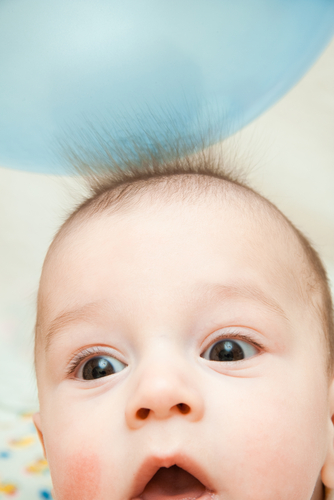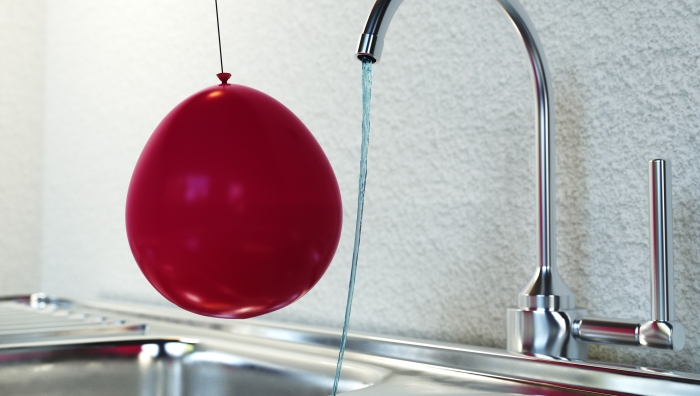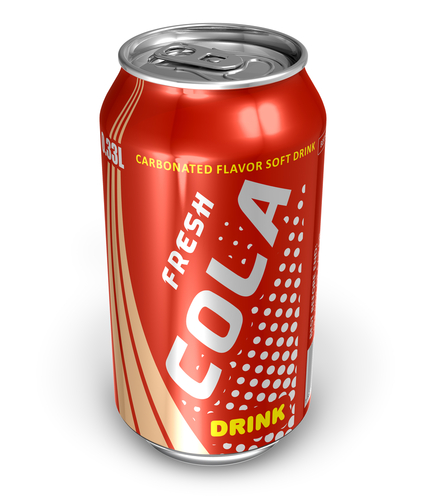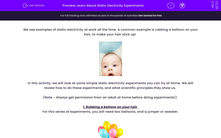We see examples of static electricity at work all the time. A common example is rubbing a balloon on your hair, to make your hair stick up!

In this activity, we will look at some simple static electricity experiments you can try at home. We will review how to do these experiments, and what scientific principles they show us.
(Note - Always get permission from an adult at home before doing experiments!)
1. Rubbing a balloon on your hair
For this series of experiments, you will need two balloons, and a jumper or sweater.

First, blow up a balloon with air. Then, we need to build up a static charge on the balloon. We can do this by rubbing the balloon on your hair or a woolly jumper.
Next, you should be able to move your balloon over your hair and make it stand on end!

Why does this happen?
The friction between the balloon and your hair causes electrons to move from your hair onto the surface of the balloon. The hair is now positively charged, and the balloon is negatively charged. Opposite charges attract, which explains why your hair stands up and moves towards the balloon!
Next, we can try and make two balloons stick together. Rub both balloons against your hair to charge them up, and then try to stick them together. What do you observe?
The balloons won't stick together - you might actually see them repel!
Why does this happen?
Objects with the same charge repel each other. Both balloons gained electrons, so both are negative, and they repel each other.
2. Charged balloon and flowing water
For this experiment, you will need a balloon and a water tap. First, run the water gently so that a narrow stream of water flows. Next, charge up the balloon, by rubbing it on your hair or clothing.
Finally, move the balloon close to the stream of water.

You should see the stream of water move and bend towards the balloon!
Why does this happen?
The balloon is negatively charged, and the water is neutral. The balloon repels the electrons in the water. This makes the part of the stream close to the balloon slightly positive. The positive and negative charges attract, so the water moves towards the balloon.
3. Moving objects with charged-up balloons
For this experiment, you will need a balloon, and an empty aluminium drinks can.

We will try and move an aluminium can without touching it, using static electricity.
Lay the can on its side on the floor or a table.
Charge the balloon by rubbing it on your hair.
Next, move the balloon close to the can without touching it.
Then, start slowly moving the balloon away from the can.
What do you observe?
The can will roll across the surface!
Why does this happen?
The balloon is negatively charged, and the can is neutral. The can is so light that the attraction between the negative balloon and the neutral can is strong enough to make the can move.
Now it is time for some questions!









